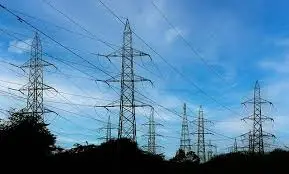Power demand in May dips slightly as weather brings relief to grid managers

May has traditionally been a challenging month for power grid managers due to soaring temperatures driving up electricity consumption. However, this year, a slight dip in power demand has been observed, providing a welcome relief to grid operators and energy suppliers alike.
Weather Plays a Key Role in Demand Patterns
The primary factor contributing to the reduced power demand in May is the comparatively milder weather conditions experienced this year. Cooler temperatures and occasional rainfall in several regions have lowered the reliance on energy-intensive cooling systems such as air conditioners and fans. This moderation in electricity use contrasts with the sharp spikes typically seen during early summer months when heatwaves push consumption to record levels.
Impact on Grid Stability and Energy Supply
For grid managers, balancing supply and demand is a critical task to avoid outages and maintain stable electricity distribution. The slight dip in demand has eased the pressure on power plants, especially during peak hours. It has also reduced the need to ramp up production from costly and often polluting backup generators, allowing for a more efficient and environmentally friendly energy mix.
Economic and Environmental Benefits
Lower power demand translates into economic benefits by reducing operational costs for energy providers. Additionally, decreased reliance on fossil-fuel-based peaking plants cuts down emissions, contributing positively to environmental goals. This trend also helps in managing fuel supply logistics more effectively, preventing shortages and price volatility.
What This Means for Consumers
For consumers, the drop in power demand may lead to more stable electricity tariffs and fewer risks of sudden power cuts. It also highlights the importance of weather trends in shaping energy consumption habits and underscores the potential of smart grid technologies and demand-side management to optimize electricity use.
Looking Ahead: Preparing for the Summer Surge
While the current dip in demand offers temporary relief, grid managers remain cautious. The summer months following May are traditionally marked by higher temperatures and increased power consumption. Utilities continue to monitor weather forecasts closely and invest in infrastructure upgrades to enhance grid resilience.






